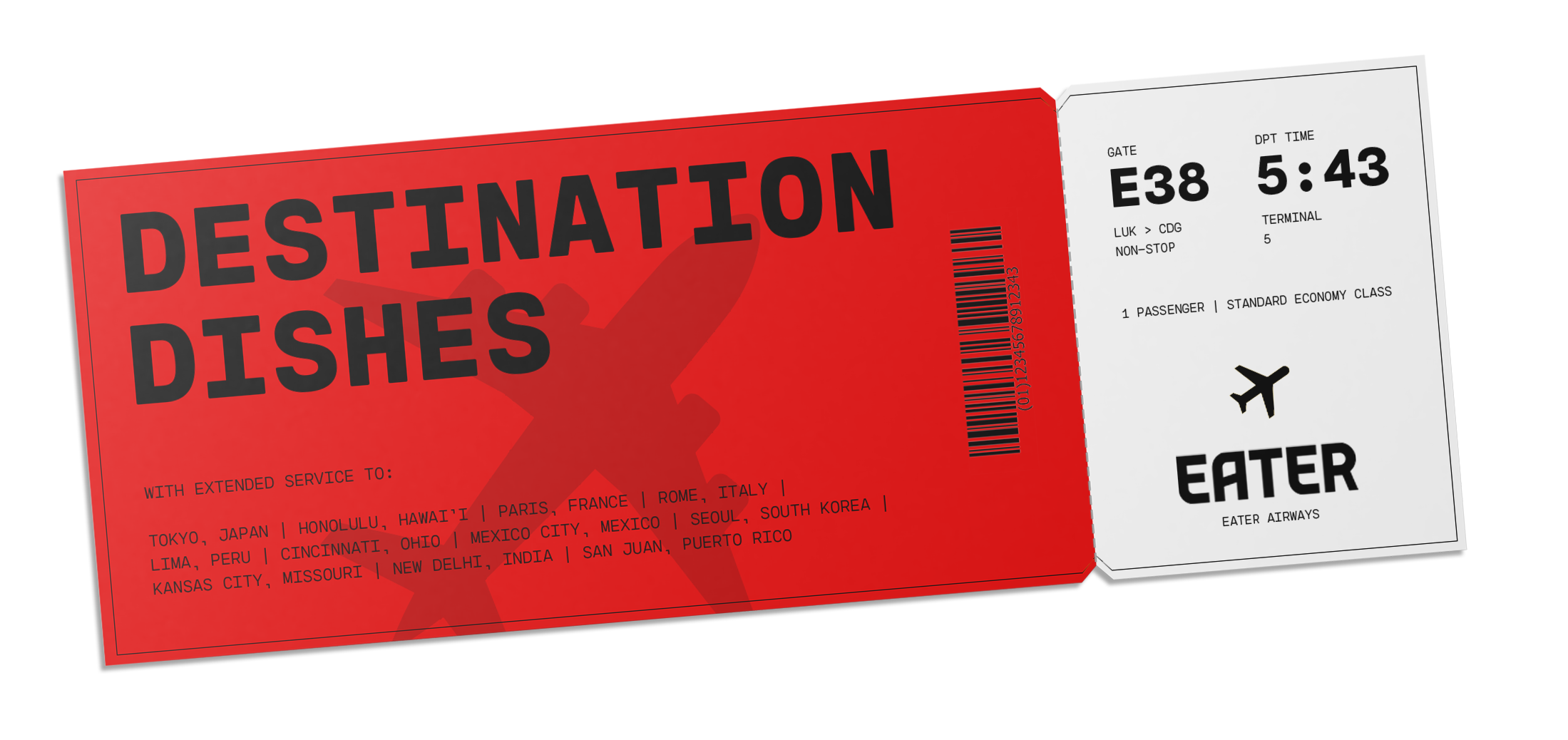You can find mofongo all over San Juan. It’s served in high-end restaurants and dive bars, at pop-up kiosks and roadside chinchorros (stalls), each with their own style and flavor. But it isn’t just ubiquitous; it also tells the story of Puerto Rico. According to historian Cruz Miguel Ortíz Cuadra, who has written about Puerto Rican culinary history, mofongo descends from West African fufu, a dish of boiled, mashed yams. Enslaved Africans brought the dish to PR, traded the yams for green plantains, and adapted the technique for the pilón, a wooden mortar and pestle.
To make the dish today, cooks still use a pilón to crush fried plantains along with garlic, oil, and chicharrones; this can vary based on who’s making it, and vegetarian versions are often available. From there, they get creative, stuffing the mashed mixture with pork, chicken, or seafood, or serving any sort of entree alongside. Along with green plantain-based mofongo, you’ll see bifongo, which adds yucca, pana (breadfruit), or sweet plantains, as well as trifongo, which combines three of the above. Don’t forget to ask for mayo-ketchup, the umami-packed portmanteau condiment that perfectly complements the starchy dish.
Gabriela Torres is on a journey to find new flavors, combining her work in food journalism and food and beverage administration. She believes the best part about eating, whether on her own island of Puerto Rico or elsewhere, is getting to know about a culture through its cuisine.
Read More
/cdn.vox-cdn.com/uploads/chorus_image/image/67553899/FullTable_AleppoSupperClub_2.14.jpg)
/cdn.vox-cdn.com/uploads/chorus_image/image/54890211/shutterstock_1032908740.1509553922.jpg)
/cdn.vox-cdn.com/uploads/chorus_image/image/73282725/_DSC9433.0.jpg)
/cdn.vox-cdn.com/uploads/chorus_image/image/71003403/El_Platanal_18.0.jpg)

:no_upscale()/cdn.vox-cdn.com/uploads/chorus_image/image/71003319/Campeon_FB.0.jpg)
:no_upscale()/cdn.vox-cdn.com/uploads/chorus_image/image/71003335/Ajo_del_Pai_s__credit_Sushella_Monclova_Chinea_.0.jpeg)
:no_upscale()/cdn.vox-cdn.com/uploads/chorus_image/image/71003346/La_verguenza.0.jpg)
:no_upscale()/cdn.vox-cdn.com/uploads/chorus_image/image/71003357/Casita_Miramar.0.jpg)
:no_upscale()/cdn.vox-cdn.com/uploads/chorus_image/image/71003365/Guarare__mofongo_de_camarones.0.jpg)
:no_upscale()/cdn.vox-cdn.com/uploads/chorus_image/image/71003373/Alcapurria_Quema___credi_tk_.0.jpeg)
:no_upscale()/cdn.vox-cdn.com/uploads/chorus_image/image/71003391/El_Platanal_22.0.jpg)
:no_upscale()/cdn.vox-cdn.com/uploads/chorus_image/image/71003394/El_Cuchifrito__Pablo_Rosas.0.jpg)